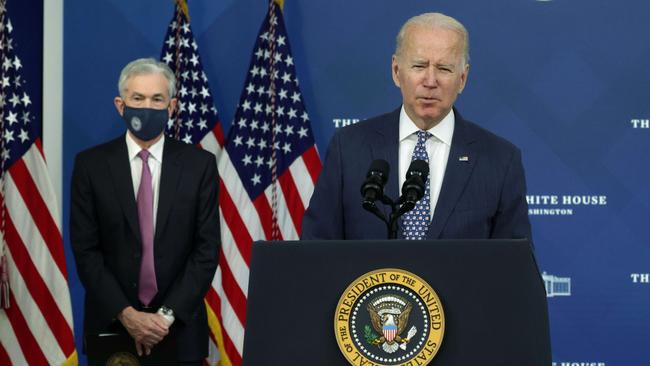
Before Wall Street opened on Monday the White House ended weeks of speculation that Powell would be replaced by Lael Brainard, an economist and Federal Reserve board member favoured by the left of the Democratic Party, which hoped she would make climate change a bigger part of the Fed’s remit.
Stock prices initially jumped as investors welcomed the certainty that comes with reappointment.
After rising 1 per cent to a record high of 4743.83 points, the S&P 500 closed down 0.3 per cent as the US 10-year Treasury bond yield jumped 8 basis points to 1.6236 per cent.
Powell, 68, a Wall Street lawyer plucked from relative obscurity by Donald Trump to lead the Fed in 2018, is about as inoffensive and obliging as Fed chairs can be.
His term extension to 2026 was welcomed by mainstream Republicans and Democrats as a vote for stability.
In reality, the President made a politically astute choice.
If inflation continues to spiral out of control, far better to have a moderate Republican at the helm than a more left-wing economist, who, along with the party who appointed her, would be held responsible for decades.
Inflation has already reached a 31-year high of 6.2 per cent, a level that is more than triple the Fed’s inflation target. The Fed’s insistence since April that higher inflation is “transitory” has prompted jokes about life being transitory.
There’s every chance inflation will continue to rise as the trillions in new dollars tipped into the US economy during the pandemic, under Trump and Biden, start seeping into the inflation statistics.
And it’s not as if Powell wasn’t accommodating the administration’s massive spending agenda anyway. The Fed has until recently been creating $US120bn ($166bn) of new money every month, most of it used to plug the government’s massive budget deficits.
During the global financial crisis over a decade ago the Fed’s balance sheet doubled to about $US2 trillion in a short period, prompting fears of inflation, as the Fed launched successive rounds of quantitative easing to help keep interest rates low.
Those fears proved unfounded, but this time the balance sheet has increased from $US4 trillion early last year to $US8.6 trillion. Free lunches can’t continue forever.
Brainard, 59, who will become vice-chairman, might have dodged a bullet. Powell could face one of the most challenging periods in the Fed’s history.
If inflation does remain elevated, the Fed will have little choice but to increase interest rates, as Paul Volcker did in the 1980s, for the Fed to maintain any credibility as an inflation-fighting force.
That though would almost certainly causing a recession, in the US and probably globally too. Saddled with vast debts, households and governments are in little position to service them at anything but ultra-low interest rates.
Pleasing the base of the Democratic party can wait, the President has figured.
Janet Yellen, who Trump dumped as Fed chairman in 2018 after a series of public disagreements, is now safely ensconced as Treasury Secretary.
And there’s plenty of opportunity to satisfy the diversity and climate change crowd.
The seven member Federal Reserve board still has three seats to fill. Biden said on Monday he was planning on brining new perspectives and diversity to the institution. So the safe bet is these appointments, to be announced in the next few weeks, will be more controversial.




US President Joe Biden appeared to opt for continuity and convention in reappointing Jerome Powell as chairman of the US Federal Reserve, a job with a better claim than any to be “interest rate setter for the world”.